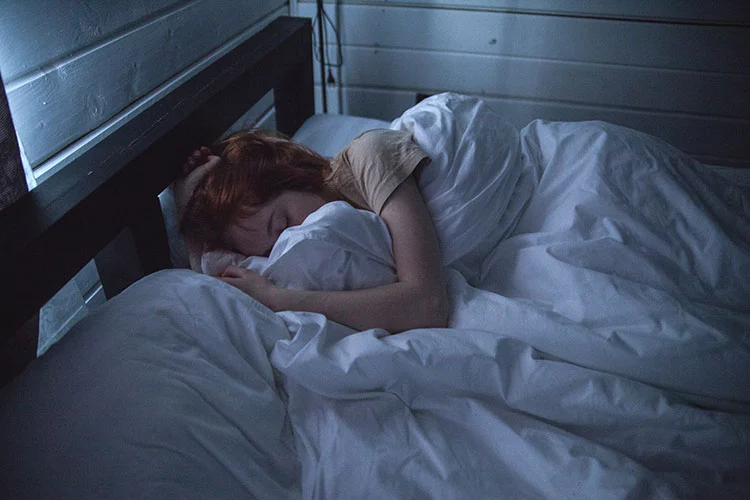Do you lie awake at night because you’re worried about your little one’s loud snoring? Childhood sleep apnea, particularly pediatric obstructive sleep apnea (OSA), affects about four percent of kids. If your child is among them, you’ll want to book an appointment with a pediatric dentist in Las Vegas, NV. If left unaddressed, this sleep disorder can have a negative impact on their overall quality of life.
What Is Pediatric Obstructive Sleep Apnea (OSA)?
If you think that OSA isn’t a big deal, think again. Children who suffer from this disorder don’t get enough restorative night’s sleep because their upper airway is either partially or fully blocked. Since the airflow is affected, their breathing stops briefly and repeatedly while they’re sleeping.
Unlike central sleep apnea, which arises from central nervous system issues impairing the body’s respiratory drive, obstructive sleep apnea is primarily caused by blockages in the upper airway.
While adults who have sleep-disordered breathing usually experience daytime sleepiness, children often present behavioral problems. In some cases, kids with pediatric OSA are misdiagnosed with attention deficit hyperactivity disorder (ADHD).
What Are Its Symptoms?
Early diagnosis and treatment are key to preventing further complications of this sleep-related breathing disorder down the road. Since pediatric OSA can significantly affect your child’s growth, behavior, and cognitive development, you should learn to identify its signs and symptoms:
- Snoring
- A nasal voice
- Sleepwalking
- Learning problems
- Morning headaches
- Hyperactivity during the day
- Tossing and turning
- Coughing or choking
- Night sweats
- Night terrors
- Mouth breathing
- Bedwetting
- Long pauses between breaths
What Are the Common Causes of Pediatric OSA?
Family History of OSA
Parents can pass down this genetic condition to their kids. If your child inherits the facial features of the parent who suffers from OSA, their chances of having pediatric OSA are greater.
Obesity
In most cases, adults who are affected by OSA are older and overweight. Likewise, kids who have a high body mass index are more likely to become afflicted by OSA. If your child is overweight, losing weight by proper nutrition and exercise can help ease the symptoms.
Enlarged Tonsils and Adenoids
One of the most common causes of airway blockage among children is enlarged tonsils and adenoids located at the back and to the sides of the child’s throat. If an infection causes them to swell, they can block the airway while your child sleeps. Additionally, dust, pollen, and other environmental irritants can also cause these glands to enlarge.
Impaired Tongue Position
Lip and tongue ties are conditions that can affect the proper function of both the lip and the tongue. Since the tongue plays an important role in breathing, impaired tongue position can have a negative impact on your child’s upper jaw development and cause them to breathe through their mouth.
Narrow Anatomy of the Mouth, Jaw, and/or Throat
The muscles in the mouth, jaw, and throat work together to keep the upper airway open. All of these muscles relax during sleep causing the tissues to fold closer together. If your little one has a narrow airway while awake, falling asleep may cause the passage to become easily obstructed.
Diagnosis and Testing
How Doctors Diagnose Pediatric OSA
Diagnosing pediatric obstructive sleep apnea (OSA) requires a comprehensive approach to ensure accurate identification and effective treatment. Here are the steps involved in diagnosing pediatric OSA:
- Medical History: The first step involves gathering detailed information about your child’s sleep patterns. Doctors will ask about symptoms such as loud snoring, pauses in breathing during sleep, and morning headaches. This helps in understanding the severity and frequency of the symptoms.
- Physical Examination: A thorough physical examination is conducted to assess your child’s overall health. This includes checking their weight, height, and blood pressure. The doctor may also examine the throat, nose, and mouth to identify any physical obstructions like enlarged tonsils or adenoids.
- Sleep Studies: To get a definitive diagnosis, a sleep study, or polysomnogram (PSG), is often recommended. This overnight test measures various physiological parameters, such as brain activity, breathing patterns, heart rate, and oxygen levels while your child sleeps. The data collected provides a comprehensive view of your child’s sleep quality and any disruptions caused by OSA.
- Home Sleep Testing: In some cases, a home sleep test may be suggested as a more convenient alternative. This involves your child wearing a device on their wrist or finger that monitors oxygen levels and heart rate during sleep. While not as detailed as a PSG, it can still provide valuable insights into your child’s sleep patterns.
By combining these diagnostic tools, doctors can accurately diagnose pediatric OSA and develop an effective treatment plan tailored to your child’s needs.
What Are the Treatment Options?
Different types of treatments are available for children who experience pediatric OSA. These may include weight management, allergy medications, inhalers, and tonsil and adenoidectomy. However, one of the best ways to treat this condition is through oral appliance therapy.
What Is Oral Appliance Therapy?
Oral appliance therapy is a treatment in which your child wears a custom-designed, two-piece removable device in their mouth to gently widen their upper jaw during sleep. The increase in the size of their upper jaw and the airflow effectively keep their airway open.
In addition, the device ensures that your child’s lower jaw is moved forward comfortably. This allows the tissue at the back of their throat to relax and prevents the base of their tongue from collapsing and blocking their airway.
Similar to an orthodontic retainer or a sports mouth guard, a pediatric dentist prescribes this appliance. In other words, unless your child is custom-fitted for it, it won’t work.
Complications of Untreated Pediatric OSA
Potential Complications
Leaving pediatric obstructive sleep apnea (OSA) untreated can lead to a range of serious complications that affect various aspects of a child’s health and development. Here are some potential issues that can arise:
- Behavioral Problems: Children with untreated pediatric OSA often exhibit behavioral issues such as hyperactivity, irritability, and symptoms similar to attention deficit hyperactivity disorder (ADHD). These problems can impact their performance at school and their interactions with peers.
- Cognitive Impairment: Sleep is crucial for cognitive development. Untreated pediatric OSA can lead to cognitive impairments, including decreased attention span, memory issues, and difficulties with learning. This can hinder a child’s academic progress and overall intellectual growth.
- Cardiovascular Problems: Pediatric OSA can increase the risk of developing cardiovascular issues. These may include high blood pressure, heart failure, and even stroke. The repeated interruptions in breathing can strain the cardiovascular system over time.
- Respiratory Problems: Children with untreated OSA are more susceptible to respiratory problems such as asthma, bronchitis, and pneumonia. The constant struggle to breathe properly during sleep can weaken the respiratory system and make it more vulnerable to infections.
- Growth and Development: Pediatric OSA can negatively impact a child’s growth and development. It can lead to delayed growth, obesity, and metabolic problems. Proper sleep is essential for the release of growth hormones, and disruptions can hinder physical development.
Promptly addressing pediatric OSA is crucial to preventing these complications and ensuring your child’s overall well-being.
Managing Pediatric Obstructive Sleep
Strategies for Managing Pediatric OSA
Effectively managing pediatric obstructive sleep apnea (OSA) requires a multifaceted approach tailored to the individual needs of each child. Here are some strategies that can help manage pediatric OSA:
- Lifestyle Changes: Encouraging healthy lifestyle habits is a fundamental step. This includes maintaining a healthy weight through proper nutrition and regular exercise. Additionally, minimizing exposure to allergens and irritants can help reduce symptoms.
- Continuous Positive Airway Pressure (CPAP): CPAP therapy is a common and effective treatment for managing pediatric OSA, especially in children with mild to moderate cases. The CPAP machine delivers a steady stream of air through a mask, keeping the airway open during sleep.
- Surgery: In some cases, surgical intervention may be necessary. Procedures like adenotonsillectomy, which involves removing enlarged tonsils and adenoids, can significantly improve airway obstruction and alleviate symptoms of OSA.
- Oral Appliances: For children with mild obstructive sleep apnea, oral appliances such as mandibular advancement devices can be beneficial. These devices help to reposition the lower jaw and tongue to keep the airway open during sleep.
- Behavioral Therapy: Behavioral therapy, including cognitive-behavioral therapy, can be effective in managing the behavioral problems associated with pediatric OSA. This therapy helps children develop better sleep habits and addresses any anxiety or stress related to their sleep disorder.
By implementing these strategies, parents and healthcare providers can work together to manage pediatric OSA effectively, ensuring that children get the restful sleep they need for healthy growth and development.
What If My Child Is Exhibiting Symptoms?
If you and your child’s healthcare provider decide that an oral appliance is the best option for your little one, you’ll want to find a pediatric dentist with expertise in oral appliances for this purpose. The pediatric dentist uses digital 3D software to visualize any issues with the child’s airway. The same digital process enables them to create an impression of your child’s teeth with a high level of accuracy.
Once the device is made, you’ll be called back for your child’s fitting. During this appointment, the pediatric dentist will give you clear instructions on how your child can use and clean the oral appliance.
Are You Looking for a Pediatric Dentist in Las Vegas, NV?
Since every child is unique, the most important first step is a proper diagnosis. If your child’s doctor has diagnosed them with pediatric OSA, be glad to know that the highly skilled dental care team at Dee for Dentist in Las Vegas is here to provide your child with the care they need.
With the use of an advanced custom-fitted oral sleep appliance, your little darling can get immediate relief from the symptoms of pediatric OSA. Contact us today to schedule an appointment by filling out a contact form or calling (702) 586-7800 or (702) 870-3818.

